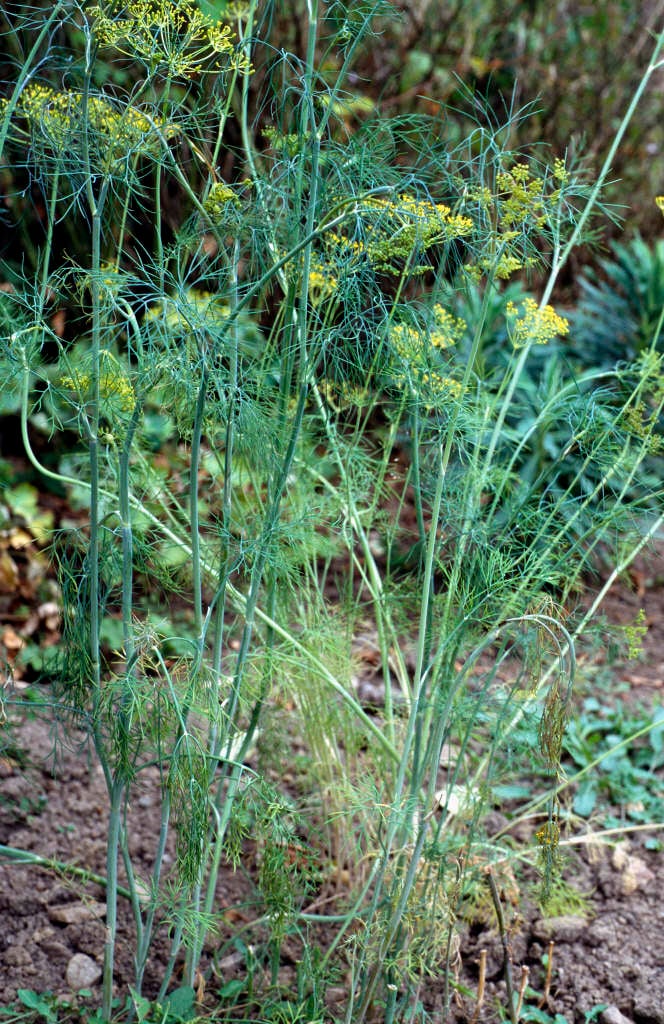Anethum graveolens
dill
An upright annual or biennial herb 60-100cm tall, with finely dissected, aromatic blue-green leaves approximately 35cm long. Flat umbels of tiny yellow flowers are produced on upright, finely ribbed stems in mid-summer. Dill is often grown as a herb for fresh scented leaves and as a cut flower. Dill seeds are also important culinary additions. Essential oil contained in seeds has medicinal properties. Various cultivars of dill are available; cultivar 'Mammoth' can reach up to 1.5m tall and cultivar 'Mariska' is very popular with florists
Other common names
anetdill-oil plant
see moreEast Indian dill
meeting-seed
Sabbath day posy
Indian dill
Synonyms
Anethum sowa hort. non Roxb. ex Flem.
Buy this plant
Size
Ultimate height
0.5–1 metresTime to ultimate height
1–2 yearsUltimate spread
0.1–0.5 metresGrowing conditions
Moisture
Well–drainedpH
Acid, Alkaline, NeutralColour & scent
| Stem | Flower | Foliage | Fruit | |
| Spring | Blue Green | |||
|---|---|---|---|---|
| Summer | Yellow | Blue Green | ||
| Autumn | ||||
| Winter |
Position
- Full sun
Aspect
South–facing or West–facing or East–facing
Exposure
Sheltered Hardiness
H4Botanical details
- Family
- Apiaceae
- Native to GB / Ireland
- No
- Foliage
- Deciduous
- Habit
- Columnar upright
- Genus
Anethum can be annuals or biennials, scented of aniseed, with leaves finely divided into linear segments, and umbels of small yellow flowers in summer
- Name status
Correct
- Plant range
- S W Asia
How to grow
Cultivation
Easy to grow in well-drained soil, in full sun sheltered from strong winds. Follow dill cultivation for more advice.
Propagation
Propagate by seed sown in succession from spring to mid-summer
Suggested planting locations and garden types
- Cottage and informal garden
- Wildlife gardens
- Flower borders and beds
- Cut flowers
Pruning
No pruning required; can be left to self-seed after flowering
Pests
Generally pest-free
Diseases
Generally disease-free
Get involved
The Royal Horticultural Society is the UK’s leading gardening charity. We aim to enrich everyone’s life through plants, and make the UK a greener and more beautiful place.